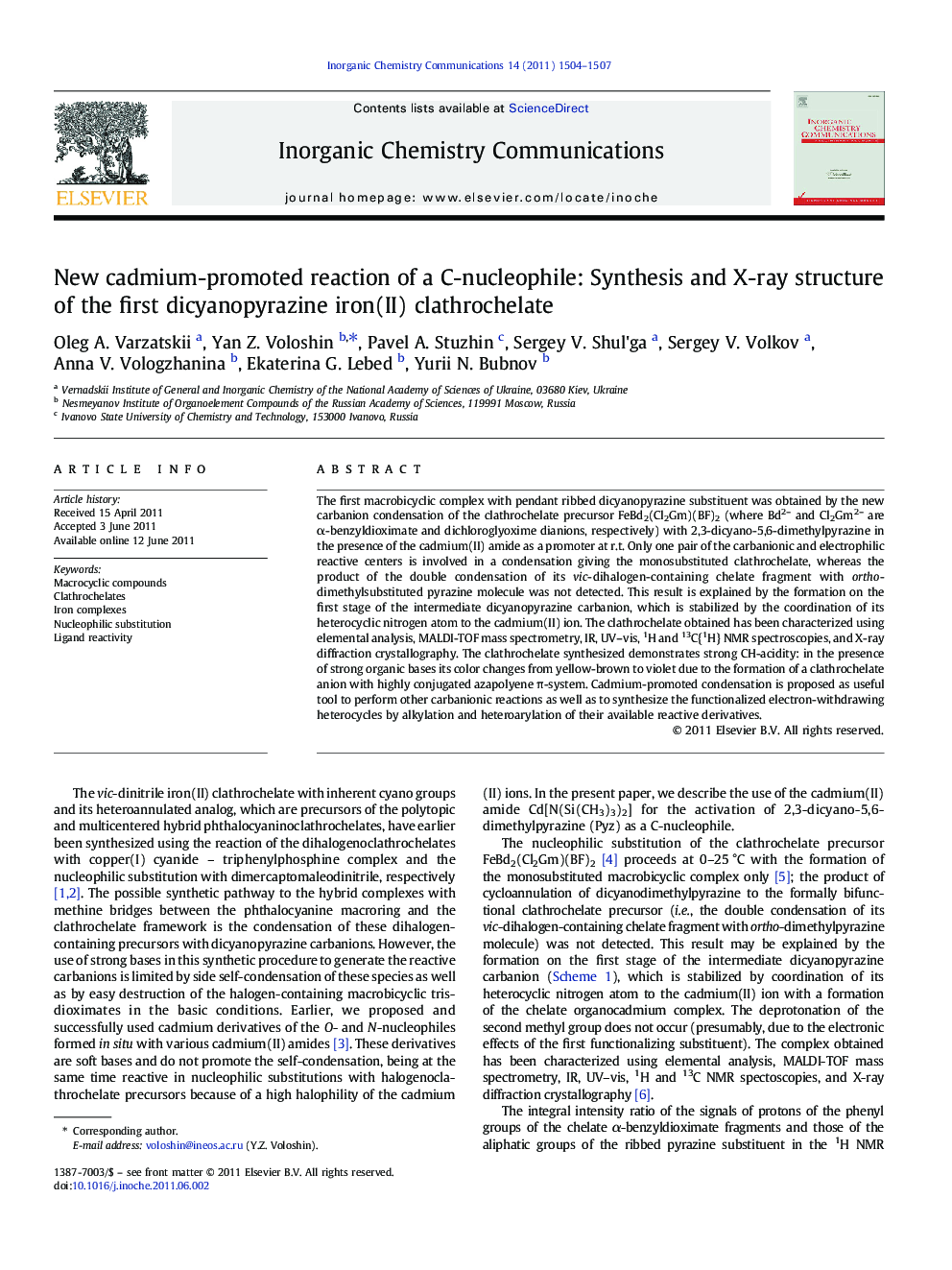| Article ID | Journal | Published Year | Pages | File Type |
|---|---|---|---|---|
| 1302575 | Inorganic Chemistry Communications | 2011 | 4 Pages |
The first macrobicyclic complex with pendant ribbed dicyanopyrazine substituent was obtained by the new carbanion condensation of the clathrochelate precursor FeBd2(Cl2Gm)(BF)2 (where Bd2– and Cl2Gm2– are α-benzyldioximate and dichloroglyoxime dianions, respectively) with 2,3-dicyano-5,6-dimethylpyrazine in the presence of the cadmium(II) amide as a promoter at r.t. Only one pair of the carbanionic and electrophilic reactive centers is involved in a condensation giving the monosubstituted clathrochelate, whereas the product of the double condensation of its vic-dihalogen-containing chelate fragment with ortho-dimethylsubstituted pyrazine molecule was not detected. This result is explained by the formation on the first stage of the intermediate dicyanopyrazine carbanion, which is stabilized by the coordination of its heterocyclic nitrogen atom to the cadmium(II) ion. The clathrochelate obtained has been characterized using elemental analysis, MALDI-TOF mass spectrometry, IR, UV–vis, 1H and 13C{1H} NMR spectroscopies, and X-ray diffraction crystallography. The clathrochelate synthesized demonstrates strong CH-acidity: in the presence of strong organic bases its color changes from yellow-brown to violet due to the formation of a clathrochelate anion with highly conjugated azapolyene π-system. Cadmium-promoted condensation is proposed as useful tool to perform other carbanionic reactions as well as to synthesize the functionalized electron-withdrawing heterocycles by alkylation and heteroarylation of their available reactive derivatives.
Graphical abstractThe first macrobicyclic complex with pendant ribbed dicyanopyrazine substituent was obtained using novel cadmium-promoted carbanion condensation of the iron(II) dichloroclathrochelate precursor with 2,3-dicyano-5,6-dimethylpyrazine. Only one pair of the carbanionic and electrophilic reactive centers is involved in a condensation giving the monosubstituted clathrochelate product.Figure optionsDownload full-size imageDownload as PowerPoint slideResearch highlights► The iron(II) clathrochelate undergoes a nucleophilic substitution with C-nucleophile. ► Cadmium-promoted reaction with dimethyldicyanopyrazine yields C-alkylated macrobicycle. ► Carbanionic condensation of the iron(II) clathrochelate gave a monosubstituted complex. ► C-nucleophilic substitution is novel approach to functionalization of cage complexes.
